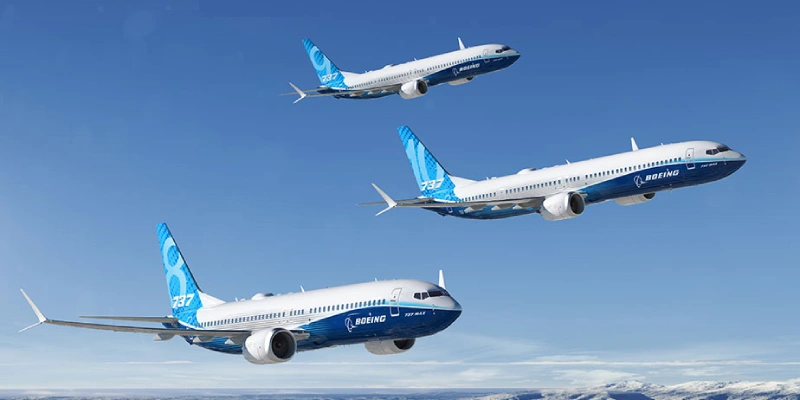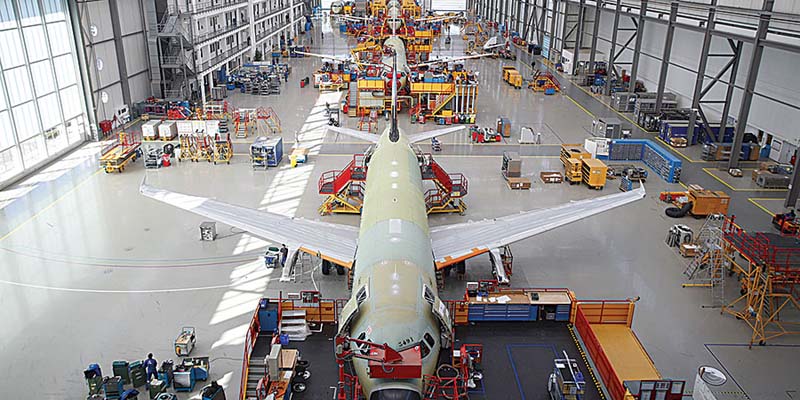Have breakfast in bed, decide between caviar or Roquefort cheese as a dinner starter, leave the ladies’ room and go down a spiral staircase to resume the card game. These scenes could well be from a luxury hotel, but they are postcards that remind us of the luxury of the Boeing 377 Stratocruiser, faithful exponent of the beginnings of the golden age of commercial aviation.
See also: Boeing 747-400 aircraft still use floppy disks to update their software.
At the end of the Second World War, airplane manufacturers adapted the models used in the war for passenger transport, which was growing by leaps and bounds.
The fascination of Pan Am
In fact, before the end of the war, Boeing was already working on a variant of the 367 model for civilian transport. The 377, better known as Stratocruiser, first flew in 1947 and attracted the attention of Pan Am, then the most important airline in the world.
See also: The experience of sleeping in an old Airbus A319 from Etihad Airways.
The American company was magnetized by the plane’s performance: with a length of 33 meters and a wingspan of 43 meters, it was capable of reaching a range of 6,760 kilometers, with a cruising altitude of 9,753 meters. It was also one of the first aircraft in history to introduce the pressurized cabin.
Pan Am paid 24.5 million dollars at that time to buy 20 units, in a risky operation that was the largest transaction in commercial aviation. Also the Scandinavian SAS, the American United Airlines, American Overseas Airlines and Northwest and the British BOAC (predecessor of British Airways) also decided on this aircraft.
In total, Boeing manufactured 56 units of this aircraft, which with its two-level cabin overtook the Jumbo in 22 years and the A380 in six decades.
Luxury in the air
None of those companies reached a level of luxury like Pan Am. Currently an exhibition organized by the museum dedicated to that airline reminds us of the level of comfort that the Stratocruiser’s transoceanic flights had.
The capacity of the plane was 100 passengers on the upper deck and 14 on the lower deck, but there were also 28 compartments with beds and bumpers to give a touch of privacy.
These were located in the upper compartments that were destined to the luggage compartments. According to cabin crew member Bronwen Roberts to CNN, even “a tall man” could sleep there. And as a chic detail, the passengers had the possibility to have their breakfast in the bunk if they wanted.
In addition, men and women had bathrooms with dressing rooms divided by sexes.
The food of Maxim’s
On board was a galley with eight conventional ovens, which prepared the dishes on the spot. And it was not just any catering: the exclusive restaurant of Paris Maxim’s was in charge of designing the menu.
Caviar accompanied by champagne was the favorite starter, and between the dishes were deployed beef tenderloins Burgundian style that were cut into thin slices in front of the passenger, accompanied by wines of first line.
After a pass of French cheeses, the meal ended with a coffee or a glass of cognac.
Rooms for socializing
On the lower deck, after descending the spiral staircase, there was a lounge where passengers used to socialize, read or spend hours with cards or board games. Another way to kill time was to drink cocktails like the Martini or the Manhattan.
This level of luxury was possible because the Boeing 377 Stratocruiser was of a unique class: later on the airlines would relegate the exclusivity on board in exchange for putting more seats and subdividing the categories. While first class would continue with new and elegant features, economy class would drive the democratization of air travel.
The end of an era
Boeing retired the Stratocruiser in 1963, after a dozen accidents caused mostly by its engines; whose over-revolutionary propellers were detached from the bucket.
In addition, the era of jet jets, with the arrivals of the B707 and later the B737, would bury the Stratocruiser’s luxurious dream, those elegant flying hotels.
Related Topics
Airbus Admits Boeing Likely to Win Order Race This Year
Airbus Completes Acquisition of Part of Spirit AeroSystems Assets
Air France Welcomes Its 50th Airbus A220 and 40th Airbus A350
Airbus Confirms It Delivered 72 Commercial Aircraft in November

Plataforma Informativa de Aviación Comercial con 13 años de trayectoria.




